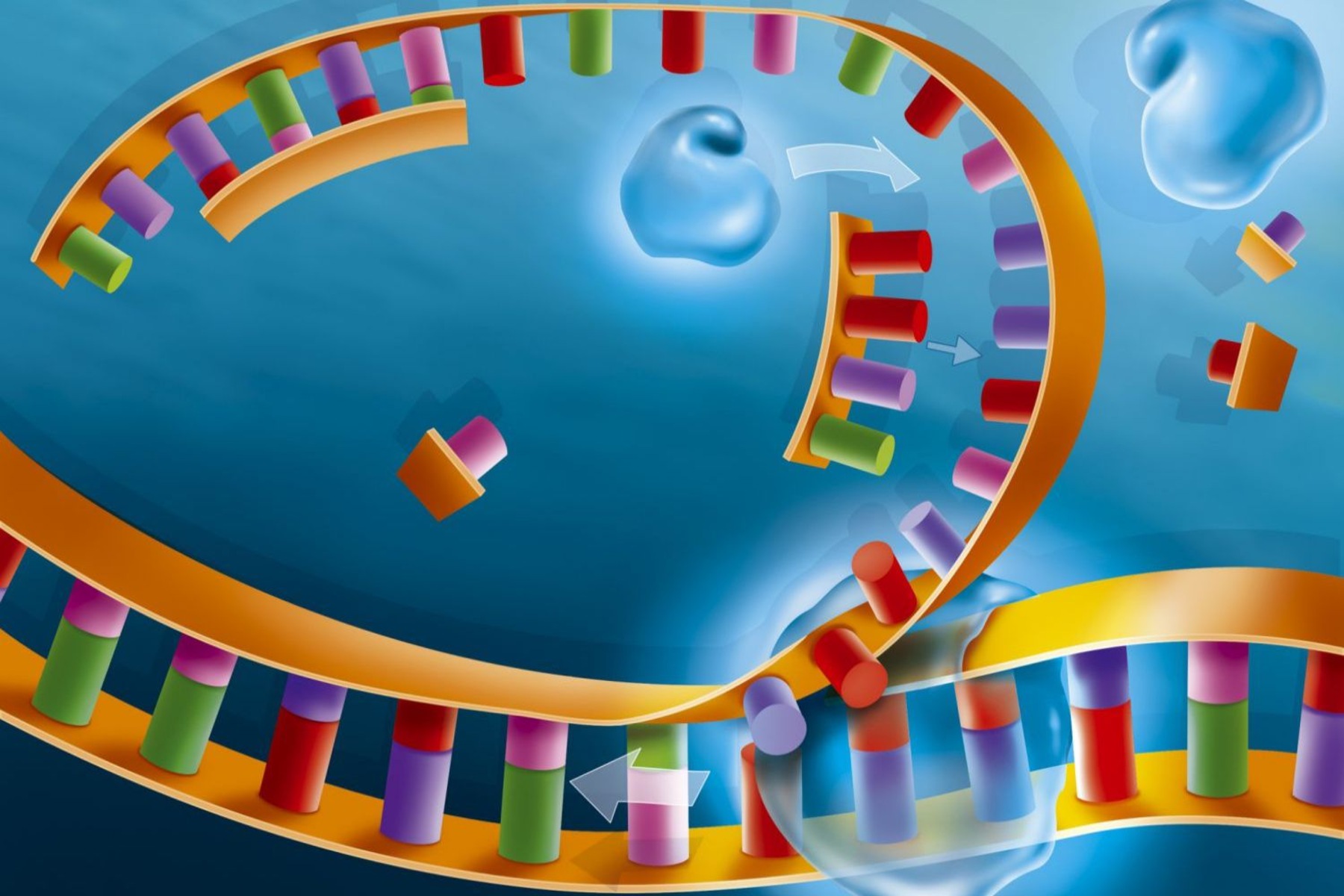
DNA helicase is a fascinating enzyme found within our cells that plays a crucial role in DNA replication and repair. It acts as a molecular “unzipping” machine, unwinding the double helix structure of DNA and allowing for the necessary processes to occur. While its importance in genetic maintenance is well established, there are many mind-blowing facts about DNA helicase that are still relatively unknown to the general public. From its intricate mechanism of action to its incredible speed and accuracy, DNA helicase continues to captivate scientists with its remarkable capabilities. In this article, we will delve into nine mind-blowing facts about DNA helicase that will give you a deeper understanding of this incredible enzyme and its essential role in the world of genetics. So, let’s uncover the secrets of DNA helicase and explore the wonders of molecular biology!
Key Takeaways:
- DNA Helicase is a superhero enzyme that unwinds DNA, helps in replication, and fixes errors. It’s like a molecular motor that keeps our genetic information accurate and stable.
- Scientists are exploring DNA Helicase as a target for fighting viruses and cancer. By stopping its activity, they hope to disrupt the growth of these harmful invaders.
DNA Helicase Plays a Crucial Role in DNA Replication
DNA Helicase is an essential enzyme involved in unwinding the double-stranded DNA molecule during DNA replication. It helps in separating the DNA strands, allowing other enzymes to access the genetic information needed for accurate replication.
DNA Helicase Works in a Processive Manner
DNA Helicase exhibits processivity, meaning it can unwind long stretches of DNA without dissociating from the DNA molecule. This allows for efficient and uninterrupted DNA replication.
DNA Helicase Functions as a Molecular Motor
Through ATP hydrolysis, DNA Helicase converts chemical energy into mechanical work, allowing it to move along the DNA molecule and unwind the double helix structure.
DNA Helicase is Highly Conserved Across Species
The gene encoding DNA Helicase is remarkably conserved in various organisms, from bacteria to humans. This highlights the vital role of DNA Helicase in maintaining the integrity of DNA during replication.
DNA Helicase Can Correct DNA Replication Errors
DNA Helicase possesses proofreading abilities, enabling it to detect and fix errors that occur during DNA replication. This helps maintain the accuracy of DNA replication and prevents the accumulation of mutations.
DNA Helicase is Involved in DNA Repair
Aside from its role in DNA replication, DNA Helicase plays a crucial role in DNA repair processes. It helps in unwinding damaged DNA strands, facilitating the repair mechanisms to fix lesions and maintain genomic stability.
DNA Helicase Participates in DNA Recombination
DNA Helicase plays a vital role in DNA recombination, a process where genetic material is exchanged between DNA molecules. It helps in the formation and resolution of DNA intermediates during recombination events.
Multiple Types of DNA Helicases Exist
There are various types of DNA Helicases identified in different organisms. Each type plays specific roles in various DNA metabolic processes, including replication, repair, and recombination.
DNA Helicase is a Potential Target for Antiviral and Anti-Cancer Drugs
The essential role of DNA Helicase in DNA replication, repair, and recombination makes it an attractive target for drug development. Inhibiting DNA Helicase activity could potentially disrupt the growth and replication of viruses and cancer cells.
Conclusion
In conclusion, DNA helicase is a remarkable enzyme that plays a critical role in DNA replication and repair. Its ability to unwind the double helix structure of DNA is essential for the proper functioning of cells and the transmission of genetic information. The nine mind-blowing facts about DNA helicase highlight the complexity and significance of this enzyme.From its intricate structure to its involvement in DNA damage response, DNA helicase showcases the incredible mechanisms at work within our cells. Its remarkable speed, capability to unzip DNA strands, and role in various cellular processes make it a fascinating subject of study for scientists.Understanding the functions and characteristics of DNA helicase not only expands our knowledge of basic biology but also has significant implications for fields such as medicine and genetics. Further research on this enzyme can pave the way for advancements in cancer treatments, genetic engineering, and personalized medicine.In summary, DNA helicase is a captivating enzyme that continues to amaze scientists with its mind-blowing abilities. Exploring its intricacies and uncovering its mysteries will undoubtedly lead to exciting discoveries in the future.
FAQs
1. What is DNA helicase?
DNA helicase is an enzyme that plays a crucial role in unwinding the double helix structure of DNA during replication and repair processes.
2. How does DNA helicase work?
DNA helicase uses ATP energy to separate the two DNA strands by breaking hydrogen bonds between the nucleotide bases, allowing access to the genetic information contained within.
3. What is the importance of DNA helicase?
DNA helicase is vital for DNA replication, repair of damaged DNA, and the functioning of various cellular processes, ensuring the transmission of genetic information.
4. Can DNA helicase be a target for drug development?
Yes, DNA helicase can be a potential target for developing anti-cancer drugs, as inhibiting its activity could disrupt the uncontrolled growth of cancer cells.
5. Are there different types of DNA helicases?
Yes, there are multiple types of DNA helicases that possess distinct functions and are found in different cellular compartments.
6. Is DNA helicase found only in humans?
No, DNA helicase is found in all living organisms, from bacteria to humans. It is a conserved enzyme that is essential for cellular processes across various species.
7. Can mutations in DNA helicase lead to diseases?
Yes, mutations in DNA helicase genes have been associated with various genetic disorders, including certain forms of cancer and neurodegenerative diseases.
8. How is DNA helicase related to DNA repair?
DNA helicase facilitates DNA repair by unwinding the damaged DNA strands, allowing repair enzymes to access and correct the DNA damage.
9. Can DNA helicase be used in genetic engineering?
Yes, DNA helicase is a valuable tool in genetic engineering processes such as PCR (Polymerase Chain Reaction) and DNA amplification techniques.
DNA helicase's fascinating role in genetic processes is just the beginning of a journey into the captivating world of cellular biology. Delve into the marvels of life by exploring how cells undergo division, unraveling the secrets of active sites in enzymes, and discovering the intricate mechanisms behind repairing DNA to maintain our genetic integrity. Each topic offers a unique glimpse into the complex and awe-inspiring machinery that makes life possible.
Was this page helpful?
Our commitment to delivering trustworthy and engaging content is at the heart of what we do. Each fact on our site is contributed by real users like you, bringing a wealth of diverse insights and information. To ensure the highest standards of accuracy and reliability, our dedicated editors meticulously review each submission. This process guarantees that the facts we share are not only fascinating but also credible. Trust in our commitment to quality and authenticity as you explore and learn with us.


